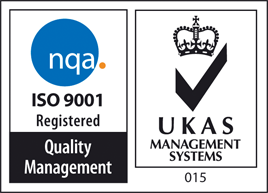Advancing Aviation Safety: Standardising Smoke Generators for Detector Testing
Summary of FAA Presentation – 2022 International Aircraft Systems Fire Protection Working Group
 Presenter: Matthew Karp, FAA
Presenter: Matthew Karp, FAA
Topic: Artificial Smoke Generator Performance in Cargo Compartment Fire Testing
Purpose of the Work
As aircraft evolve and safety requirements become more stringent, there’s growing emphasis on developing false alarm–resistant smoke detectors. To test these next-generation systems effectively, the FAA is leading efforts to standardise the performance of artificial smoke generators used in certification testing.
This initiative ensures that the smoke used in tests accurately mimics real fire conditions, such as smouldering fires in cargo compartments—providing more reliable results and safer aircraft.
Why Standardisation Matters
Historically, artificial smoke generators varied widely in:
- Particle size
- Smoke concentration
- Plume behaviour
- Sensitivity to ambient conditions
Such inconsistencies can compromise the accuracy and repeatability of smoke detector certification. The FAA’s work aims to define performance benchmarks, ensuring smoke generators consistently replicate realistic fire conditions during testing.
Key Performance Parameters Under Review
- Particle Size Distribution
- Essential for mimicking the optical properties of real smouldering fires.
- Detectors respond differently depending on aerosol size, so tuning this is critical.
- Obscuration (Smoke Density)
- The rate and level of light obscuration affects how quickly detectors activate.
- Smoke generators must deliver consistent output across trials.
- Vertical Smoke Transport
- In real fires, buoyant plumes carry smoke upward to detectors.
- Test equipment must replicate this behaviour to validate ceiling-mounted sensors.
- Environmental Stability
- Smoke output should remain consistent under varying temperatures or airflow conditions.
The Role of the Concept Aviator UL
Among the systems evaluated, the Aviator UL (supplied by Concept Engineering Ltd) served as a case study for the kind of performance the FAA aims to standardise.
- Adjustable Output: Allows tuning of heat and propellant pressure to simulate different fire scenarios (e.g., slow smouldering or faster transition fires).
- Continuous Aerosol Production: Ensures smooth, repeatable smoke density without pulsing artefacts.
- Particle Size Control
- Environmental Resilience: Demonstrated stable output across varying ambient conditions.
The Aviator UL is a strong example of a generator that meets the emerging performance criteria the FAA is proposing for industry-wide adoption.
Outcome and Future Implications
This work forms the foundation for:
- Formal qualification standards for smoke generators
- Improved test repeatability across laboratories
- More reliable validation of advanced smoke detection technologies
By ensuring test aerosols closely resemble real fires, the aviation industry can move toward safer, smarter detection systems — and better protect passengers, cargo, and crews.
Conclusion
The FAA’s ongoing efforts to standardise artificial smoke generator performance are a vital step in improving the credibility of smoke detection testing. Tools like the Concept Aviator UL are helping pave the way, offering controlled, consistent, and fire-realistic aerosol output that aligns with these critical goals.
For more information, visit www.conceptsmoke.com or view the full FAA report: https://www.fire.tc.faa.gov/2022Conference/files/Cargo_Compartment_Fire_Protection_I/KarpSmokeGenerator/Karp_SmokeGenerator_Pres.pdf
Equipment used:






